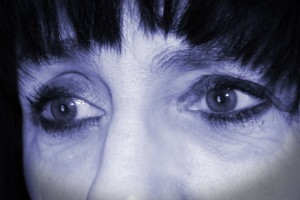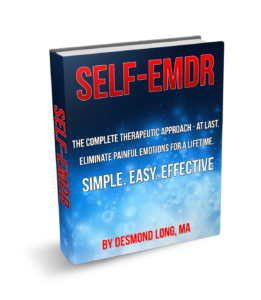What is anxiety? It is a normal, healthy and necessary part of our day-to-day life. For example, we should be anxious and therefore vigilant to an appropriate degree when standing on the edge of a cliff in a blustery wind; unless we’re a bird, of course. Again, anxiety is an entirely understandable response for Mary as she awaits the results of her cancer biopsy.
But anxiety disorder is different. By definition it is typically marked by vulnerable emotions, a feeling of dread, extreme nervousness or the impression of being unsafe – when there is no objective reason for these reactions. Debilitating panic attacks are an extreme example of anxiety disorder. 
Mental healthcare specialists have claimed that, worldwide, 30 percent of the population suffer from emotional problems every year, sufficiently severe to require professional intervention. Whether or not such a blanket claim is meaningful and provable, it must be acknowledged that anxiety, depression, anger management problems, an inappropriate response to stress, and a general dissatisfaction with life, afflict virtually all Western countries. Perhaps strangely, some statistics claim that the poorer the community the happier are its members!
So… what causes anxiety disorder? Simplifying the old “nature versus nurture” approach, the question of genetics must be looked at. If an unusually high incidence of anxiety runs in the family, its members downstream tend to have a higher incidence of anxiety. A predisposition is said to exist in the bloodline. But if Granddad were a manic depressive (bipolar), perhaps a bully who screamed and ranted at his children, they are likely to grow up in a fraught environment – unsafe, unloving, intimidating. In turn this learnt behaviour can be passed from generation to generation. Children are very, very sensitive and impressionable, and not only model the responses of the authority figures in their own life, but also develop sometimes unfortunate coping mechanisms; such as anxiety disorder. In an extreme case, “If he scares me too much I’ll get a migraine or asthma, then he won’t be allowed to hurt me.” Of course the migraine or asthma is purely a subconscious psychosomatic reaction.
There are various strategies used to combat anxiety disorder. In terms of this book, Self-EMDR: The Complete Therapeutic Approach, we tell people that instead of taking a pill so it doesn’t hurt so much, why not remove what is causing the pain. This approach also makes a reader independent and self-contained, all for the price of several cups of coffee.
(1) Needless to say, both Complementary/Alternative and Allopathic (orthodox) medication is available to treat anxiety disorder.
(2) Some sufferers are able to move the emotional stress to the physical level by resorting to a programme of physical exercise. It is much easier to drain physical stress than emotional stress, simply by resting up for a while.
(3) Talking to a friend or family member enables you to express the conflict causing anxiety disorder within a supportive environment, and often in the process create more of a sense of balance, control and structure. This is what counselling is all about. Seldom is a person destroyed by a trauma. Rather, it is the lack of support which does the damage.
(4) Mindfulness exercises. A meditating technique involves the individual focussing acutely on that point in time called “the present” to the exclusion of the past and the future. Significantly, stress and anxiety flow when one remembers past conflicts and pain; and also when one looks into the future, anticipating further conflicts and pain. The present is a fraction of a second which we travel – locked in – that is free from both.
(5) Set goals for yourself daily, and keep to them. This establishes the impression of structure and control, the very qualities missing when anxiety disorder is encountered.
(6) Practise deep breathing. While anxiety can cause the victim to hyperventilate, measured diaphragm breathing can actually “fool” the autonomic nervous system into emerging from its “fight or flight” response – that is part of anxiety disorder.
(7) Diet. Informed nutritional advice, available from a dietician or the pharmacy, has been credited with reducing or eliminating anxiety disorder. In fact a healthy diet is essential for many areas of well being. Complementary/alternative practitioners with access to dietary supplements may also prove helpful.
(8) Check out the book by Desmond Long : Self-EMDR: The Complete Therapeutic Approach. CLICK HERE.
